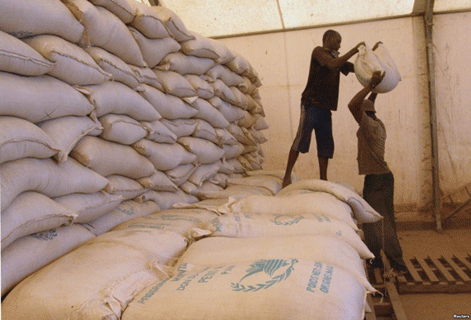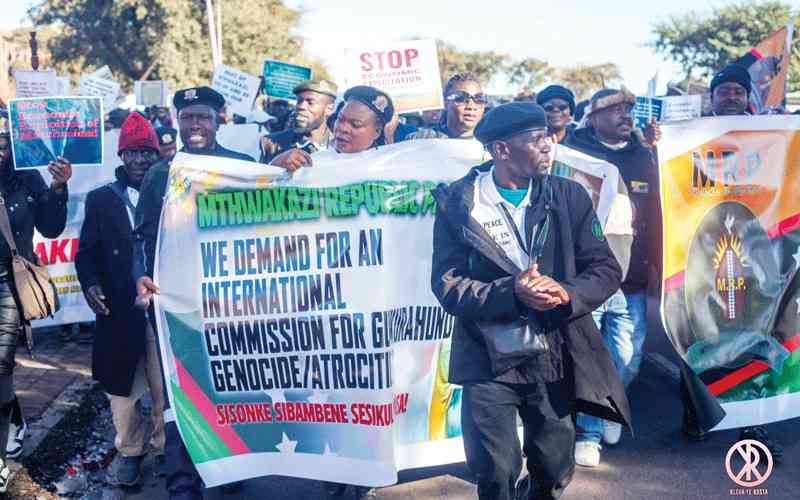
DAKAR — With the vast majority of population growth taking place in towns and cities, according to the United Nations (UN), aid agencies are adapting their food security responses to better fit into urban contexts.
An increasing number of tools and innovations are becoming available to help with this effort, but humanitarians have yet to undertake the shift required for large-scale systematic urban response, say aid experts.
Because urban populations tend to have more available salaried employment and a less visible link to seasonal uncertainties, they are sometimes considered better able to cope with shocks than their rural counterparts — but this is often not the case.
“Even though access to markets is better, financial access is not necessarily better. Everything is just so much more expensive in an urban area: You have to pay for your water, your electricity, your rent, your food and your transport. Nothing is free,” Laura Phelps, urban displacement adviser at the Norwegian Refugee Council (NRC), said.
And as the urban poor are generally more dependent on precarious informal-sector income that “rarely meets consumption needs”, they are more likely to use risky coping mechanisms.
Additionally, urban populations often do not grow their own food; they are thus more vulnerable to the vagaries of market price fluctuations, which can be seriously affected by rising fuel prices.
And existing food security assessment tools can give misleading results in urban areas, with urban diets appearing to be more diverse than rural ones while quantities of protein remain very low.
It is now well established that cash and vouchers are often more appropriate than food distributions in urban settings, and that this should become the default response where markets are working.
- Chamisa under fire over US$120K donation
- Mavhunga puts DeMbare into Chibuku quarterfinals
- Pension funds bet on Cabora Bassa oilfields
- Councils defy govt fire tender directive
Keep Reading
Cash can quickly target more people when a population is spread across a vast area. It is safer and faster and often disrupts markets less, Graham Mackay, Oxfam Great Britain’s deputy humanitarian director, says.
Numerous studies have established that food-insecure households tend to primarily spend the money distributed on diversifying their diets, as well as on settling debts or education fees.
Cash can help to make markets work for the poor, which must be a standard of urban disaster relief and recovery, says UN-Habitat. A strong understanding of the local market should be at the heart of any urban assessment.
UN-Habitat suggests assessing pre-existing markets, re-establishing major markets, buying locally whenever possible, and getting small businesses working, where possible.
Where disrupted, agencies must support efforts to re-establish supply, storage and market mechanisms, while providing cash, vouchers or support to income-generating activities.
National and local government agencies are almost always more present in cities than in rural areas, which can make it easier for international humanitarian actors to locate and work with them.
At the same time, the multiplicity of actors involved means there is usually less clarity about who is in charge. Several agencies, including Action against Hunger, the World Food Programme and Oxfam, recommend mapping political structures, power relations and interests at the beginning of an intervention.
Some of the most efficient urban emergency responses are linked to a government-led existing social security system that targets the vulnerable.
However, agencies must balance engaging with the government with humanitarian principles.
Agencies should co-ordinate with relevant government authorities on urban assessment, where possible. Livelihoods-based needs assessments may be more relevant than single-sector assessments given that residents use cash to meet shelter, food, health and water needs, says the British Red Cross, and that given urban residents often have multiple income streams.
And when analysing livelihood and food security, aid groups must not overlook the possible links between urban households and their rural communities, through which they may be sourcing food. Assessments must also address urban expenditures such as fuel and transport costs.
When targeting in urban contexts, aid providers must take care to ensure that vulnerable groups are not overlooked. These include informal settlements, refugees, internally-displaced people and socially-marginalised groups. Not all informal settlements are marked on official city maps.
Neighbourhood-based targeting and co-ordination might be more appropriate in a city if all actors decide to co-ordinate along these lines.
Rural assessment tools, such as the integrated food security phase classification, should be adapted to urban settings, as should some standards, such as the sphere standards for nutrition, say several critics.
“A lot of responses we use in rural areas are replicable, but we need to take more time to analyse need and target vulnerable households, taking into account the added complexity of urban contexts,” NRC’s Phelps said.
Finally, urban indicators need to be very responsive to change, given the speed with which cities change.
Technologies can assist in urban distributions. Some agencies are crowd-sourcing information on the locations of needs.
Digital satellite mapping can show slums and squatter settlements. Google Maps provides information that can be used to track distributions and the movement of goods.
As urban programming is a relatively new field with few evidence-based practices, all new programmes should be designed and funded with a strong monitoring and evaluation capacity, as well as a significant research component, Ian MacAusland, an education expert at the think-tank Oxfam Policy Management, said.
Tracking and targeting urban populations is labour intensive, so agencies must allot more time and resources to it than they would in rural settings.
Large-scale distributions can become focal points for violence, says the US Agency for International Development. To minimise these risks, distributions should be kept local.
They could be linked to neighbourhoods or sections of neighbourhoods.
When planning urban response, agencies must know what they want to achieve and when to leave, as it can be difficult to tell when an “emergency” ends and “normal” conditions begin.
— IRIN










